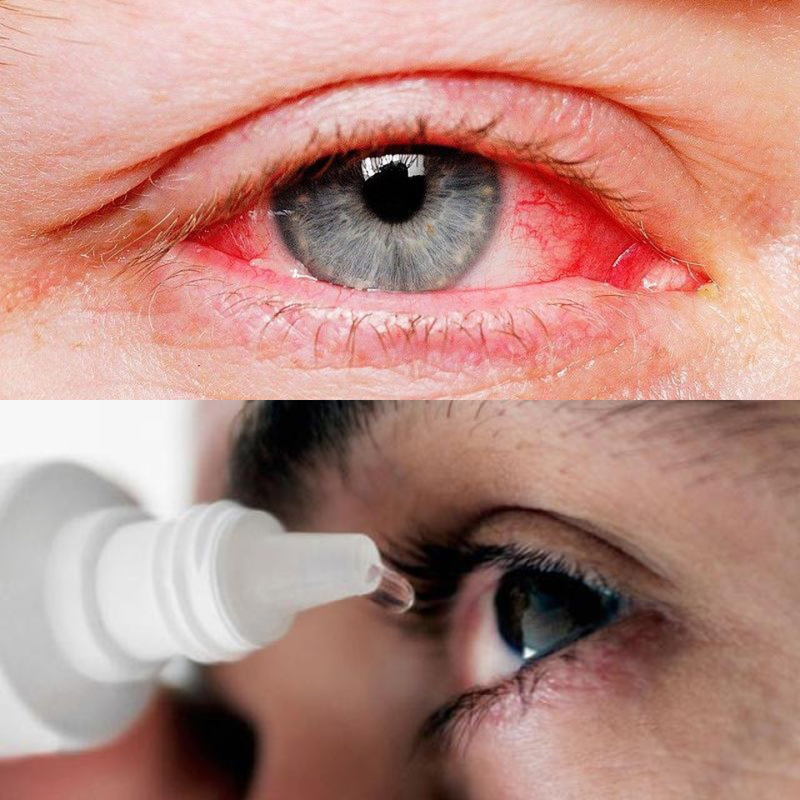What Is a Corneal Scar?

A corneal scar is a sign of corneal damage
A corneal scar occurs when fibrous tissue forms on the cornea—the transparent front layer of the eye—after an injury. When the cornea becomes inflamed, scratched, or affected by deep surgical intervention, this fibrous tissue replaces the natural clear tissue, causing blurred or distorted vision.
The impact of a corneal scar depends on its depth and location. If the scar is located in the central cornea, the patient may experience blurry or distorted vision, especially at night. Scars at the periphery of the cornea, however, tend to affect vision less.
Why Do Some People Develop Corneal Scars After Vision Correction Surgery?
Corneal scars can form for various reasons, with the most common being:
- Corneal injury caused by exposure to chemicals (detergents, solvents), foreign bodies such as dust or insects entering the eye, intense light sources (welding sparks, UV rays), or improper use of contact lenses with poor hygiene. These injuries can leave scars, particularly when the corneal damage is deep or becomes infected.
- Corneal infection resulting from eye conditions such as keratitis, conjunctivitis, ocular herpes, or herpes zoster ophthalmicus can cause corneal ulceration that heals with scarring. This is a common cause in patients with recurrent corneal inflammation.
- Inherited corneal dystrophy, a congenital condition, causes the cornea to become cloudy and prone to scarring even without trauma or infection. It typically affects both eyes and may lead to severe vision loss if left untreated.
Refractive surgeries such as LASIK, PRK, or SMILE improve vision by reshaping the cornea. However, certain surgical or post-operative factors can lead to inflammation or damage, resulting in the formation of post-surgical scars.
1. Inflammatory Reaction After Surgery

Corneal scars may develop due to inflammation
During surgery, the doctor cuts or lifts part of the corneal tissue to reshape it. This can trigger an inflammatory response, leading to scar formation during healing. Patients with a strong inflammatory response or a predisposition to keloid scarring are more likely to develop corneal scars after surgery.
2. Postoperative Corneal Infection
One of the most common causes of corneal scarring after surgery is postoperative infection. Bacteria, viruses, or fungi entering the surgical wound due to poor hygiene can cause corneal ulcers. Once healed, these areas often leave scars that reduce corneal transparency.
3. Thin or Weak Corneas
For patients with naturally thin corneas, laser treatment can damage the deeper corneal layers beyond the safe limit, causing scars or irregular corneal shapes. This is why surgeons always measure corneal thickness carefully before recommending surgery.
4. Improper Post-Surgery Eye Care
Rubbing the eyes, missing prescribed eye drops, or exposing the eyes to dust can lead to damage. Even a minor scratch left untreated after surgery can result in long-term corneal scarring.
5. Outdated Techniques or Equipment
Older surgical technology or imprecise procedures can cause excessive corneal damage. In some cases, “micro-scars” appear—tiny scars that scatter light and cause glare or halos when looking at bright lights at night.
How to Recognize Corneal Scars
- Vision becomes progressively blurry even after healing from surgery.
- Sensation of irritation, burning, or constant tearing.
- Halos or glare when exposed to bright lights.
- The cornea appears cloudy and loses its natural transparency.
If you experience one or more of these symptoms, visit an eye specialist for an examination using a slit-lamp microscope or corneal topography.
Are Corneal Scars Dangerous?

Corneal scars can be treated by ophthalmologists
The cornea is the clear, dome-shaped tissue at the front of the eye responsible for refracting and focusing light onto the retina to produce sharp images. When the cornea is deeply damaged by infection, trauma, or inflammation, destroyed cells are replaced by fibrous tissue, forming scars.
Although small, corneal scars can have serious consequences. They make the corneal surface cloudy, scattering or distorting light passing through, which reduces image clarity. In severe cases, scars covering the central cornea can cause significant vision loss, prolonged blurriness, or even blindness.
Additionally, scars can increase the risk of recurrent inflammation or cause corneal rupture in the future if the eye sustains a strong impact.
Treatment for Corneal Scars After Vision Correction Surgery
To effectively treat corneal scars, doctors evaluate the scar’s depth and location to determine the most appropriate treatment:
1. Medication
For superficial scars, doctors may prescribe eye drops containing corticosteroids, oral anti-inflammatory medications, or corneal-nourishing solutions to gradually fade scars over time. It’s important to follow the prescribed dosage, as overuse may cause side effects like elevated eye pressure.
2. Laser PTK (Phototherapeutic Keratectomy)
This method uses an excimer laser to remove scar tissue from the corneal surface, restoring clarity. PTK is suitable for superficial scars confined to the epithelial or Bowman’s layer.
3. Corneal Transplantation
For deep scars that severely affect vision, a corneal transplant may be performed—replacing the damaged tissue with donor or artificial corneal tissue. This surgery has a high success rate and a low risk of tissue rejection.
How to Prevent Corneal Scars
To prevent corneal scars and protect long-term vision health, you should:
- Treat corneal infections or ulcers early to prevent scarring.
- Wear protective eyewear in environments with dust, chemicals, or flying particles.
- Maintain proper hygiene when using contact lenses—always wash your hands and use quality lenses.
- Include vitamin A-rich foods such as carrots, leafy greens, oranges, avocados, oily fish, eggs, and beta-carotene fruits in your diet.
- Do not attempt to remove foreign objects from your eyes yourself; seek medical assistance for safe removal and proper disinfection.
Following these steps can help minimize corneal damage and reduce the risk of scarring after trauma or surgery.
Although corneal scars after myopia surgery are not very common, they can seriously impair vision if not treated properly. Choosing the right surgical technique, maintaining good postoperative care, and attending regular check-ups are essential to preserve clear, healthy vision.

 vi
vi 21-Oct-2025
21-Oct-2025











 0916.741.763
0916.741.763 Appointment
Appointment